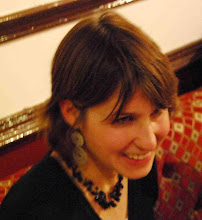Djohar! (The quizz from the previous post is still going on!!)
What I will remember from my first steps in West Bengal...
 - the elegance of women dressed in glistening and colourful saris. When they sit in group, they are as beaming as a rainbow!
- the elegance of women dressed in glistening and colourful saris. When they sit in group, they are as beaming as a rainbow!
 - the elegance of women dressed in glistening and colourful saris. When they sit in group, they are as beaming as a rainbow!
- the elegance of women dressed in glistening and colourful saris. When they sit in group, they are as beaming as a rainbow! Most inhabitants of the villages we visited are Santals, which form the largest tribal group in East India. Farmers grow rice during summer and most of them also keep animals, mainly goats, indigenous cows, buffaloes, sheep, pigs and poultry.
Rice production only covers 6 months of food needs on average. Thus, farmers are commonly engaged in seasonal off-farm work, e.g. in construction works, stone crushing or coal mining.
- water scarcity in a region where annual rainfall ranges from 1400-1600 mm. But rainfall is concentrated during 4 months of the year and there is not enough water during winter to grow grain crops or vegetables.

In Jogradihi, the last village we visited, there is no tube well for drinking water. So women go to fetch water at the nearby stream between 2 to 5 times a day. They have dug holes on the bank of the stream to get cleaner water (see picture). They collect water after filtering it through a shawl.
Discussion with villagers in Jogradihi
A few anecdotal souvenirs...
During this trip I also met:
- the most crazy (but incredibly skilled!) taxi driver ... Every day, Sreedhar an d I were travelling 3h between Bankura, the main town of the district, and Saltora, 40 km away, where we were visiting villages. Within 5 days, we almost hit 12 bicyles riders, 16 goats, 27 dogs and 40 chickens (I noticed chickens always decide to cross the road when you arrive).
d I were travelling 3h between Bankura, the main town of the district, and Saltora, 40 km away, where we were visiting villages. Within 5 days, we almost hit 12 bicyles riders, 16 goats, 27 dogs and 40 chickens (I noticed chickens always decide to cross the road when you arrive).
 d I were travelling 3h between Bankura, the main town of the district, and Saltora, 40 km away, where we were visiting villages. Within 5 days, we almost hit 12 bicyles riders, 16 goats, 27 dogs and 40 chickens (I noticed chickens always decide to cross the road when you arrive).
d I were travelling 3h between Bankura, the main town of the district, and Saltora, 40 km away, where we were visiting villages. Within 5 days, we almost hit 12 bicyles riders, 16 goats, 27 dogs and 40 chickens (I noticed chickens always decide to cross the road when you arrive). It seems these guys have a strong preference for French blood!


















 And the best swimming-pool of Andhra Pradesh is here !
And the best swimming-pool of Andhra Pradesh is here !





